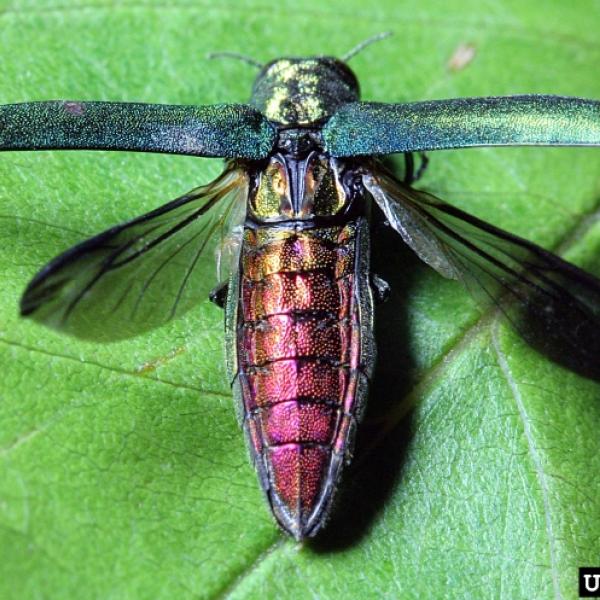
News Source
The emerald ash borer, which is responsible for the death of millions of ash trees around the country has now been discovered in Barre, Groton, and Plainfield. It was first detected in Orange. The news has many public and industry officials around the state preparing for what's to come.
Carl Russell spends most of his time out in the woods, logging and managing the forest. The Randolph forester says ash trees are a small percentage of the state's trees, but when he heard the emerald ash borer was discovered in Orange last month, it caught his attention. "It's going to have an economic impact -- the ash is one of our more valuable species," Russell said.
Public officials at a press conference announced the bad news Monday. "We are determined to do everything we can to mitigate the harm that the emerald ash borer presents to vermont forests and industry," said Rep. Peter Welch. That concern for the pest the size of a penny has also made its way to Washington. Welch said he wants more funding for the USDA to research the invasive beetle. "This problem is not something that can be all together eliminated, but it can be mitigated."
"It will eat any ash tree, whether it's in a forest setting or along a city side walk," said Steve Sinclair with the Department of Forests, Parks and Recreation. He says roadside surveys are looking at Vermont's ash trees -- both in forests and urban areas. "It's a relatively new pest, but unfortunately we have yet to find any natural predator or any way to control it."
Back in the woods, Russell says he's just watching and waiting. "I'm just going to wait and see how other infestations are found and how rapid the trees decline when the trees are infested," he said.
The results from ash tree survey should be available by next week. That information will help officials figure out how to attack the pest problem.